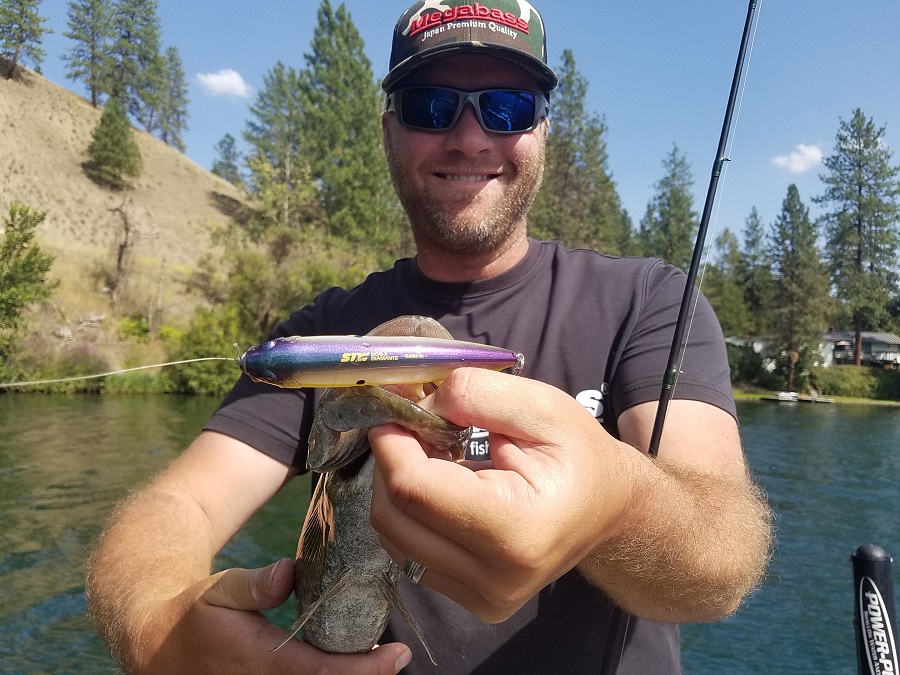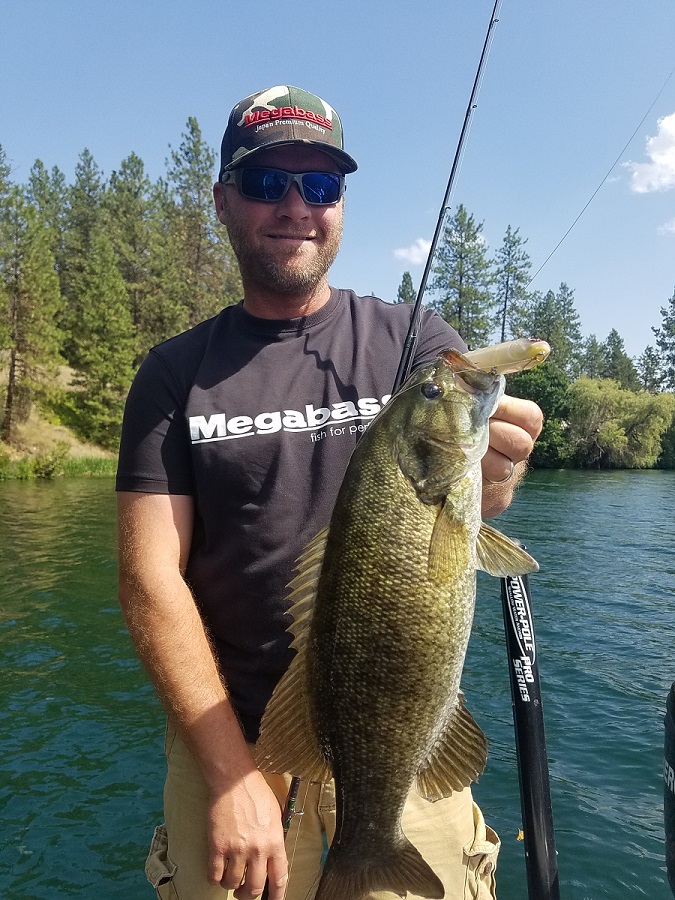
Who doesn’t love topwater fishing? All bass anglers love the explosion. The same can be said of the hard fighting smallmouth. Combining the two is even better and late summer and fall is the best time to get a big topwater smallmouth. Bassmaster Elite Series pro Luke Clausen shares some tips on how to catch more and bigger smallmouth this season.
Retrieves Matter
Many topwater baits on the market will walk side to side with little or no effort. It comes down to figuring out the right  cadence for that day according to Clausen.
cadence for that day according to Clausen.
“With smallmouth it is all about finding what they want that day,” he said. “They are much more aggressive than largemouth at times so you almost can’t fish it too fast.”
His general rule of thumb for how fast to work the bait depends on the depth he is fishing. “If the water is less than five feet, I tend to work it much more quickly”, he said.. As he moves to deeper grass and points, he prefers to walk the bait slower to draw them up from the depths.
Locations
Smallmouth topwater fishing is dependent on finding baitfish during the fall. “I have found that, unlike largemouth, smallmouth prefer to chase bait out in open water instead of in the back of pockets and creeks,” he said. “Places like points and humps that have water flow above them congregate the baitfish and are great places to start looking.”
The same can be said of aquatic vegetation. “If they are feeding on perch or bluegill, deep weedlines are perfect because that is where the baitfish like to hide,” he said. “I usually fish the inside of the grass in the mornings and then back out to the outside later on in the day.”
Bait and Color Selection
When it comes to bait selection, walking topwaters are what Clausen usually picks up first. His top two baits are the Megabass Giant Dog-X that is just under four inches long and the larger 4-3/4" Dog-X Diamante.
The biggest key with topwater colors is the bottom. “Smallmouth are very visual and key in on certain colors on the bottom of your bait. Baits with a chartreuse or orange belly really draw them in,” added the Washington pro. “I also tend to shy away from the clear, translucent bottoms when topwater fishing for smallmouth.”
Another approach he recommends is to simply to match the forage, either going with a bluegill, perch or shad pattern if that is what they eat in the body of water you are fishing. “Another thing that I feel is overlooked sometimes is a black topwater,” he said. “It works very well for smallmouth in lowlight conditions.”
Gear Selection
While many anglers have made the switch to braided line for topwaters, Clausen prefers not to when fishing for smallmouth. “Smallmouth thrash and jump way more than largemouth do and that braid tends to rip the trebles out,” he said. “I would rather use a 17-lb mono. It has some stretch, but not as much as lighter mono does.”
His line of choice is a moss green colored Gamma Copolymer.
Rod selection comes down to a few factors; casting distance and ease of walking a bait. For a more open water situation with a Giant Dog-X, he will use a Megabass Orochi XX 7' Medium Flat Side Special. When upsizing to the Dog-X Diamante, he’ll switch to a longer 7'5" MH Extreme Mission Type F in the same lineup.
Catching big topwater smallmouth can be summed up by finding the right location, retrieve and bait color. Keeping it simple and having the right approach will help you land more hard-fighting smallmouth.


 Advertising
Advertising